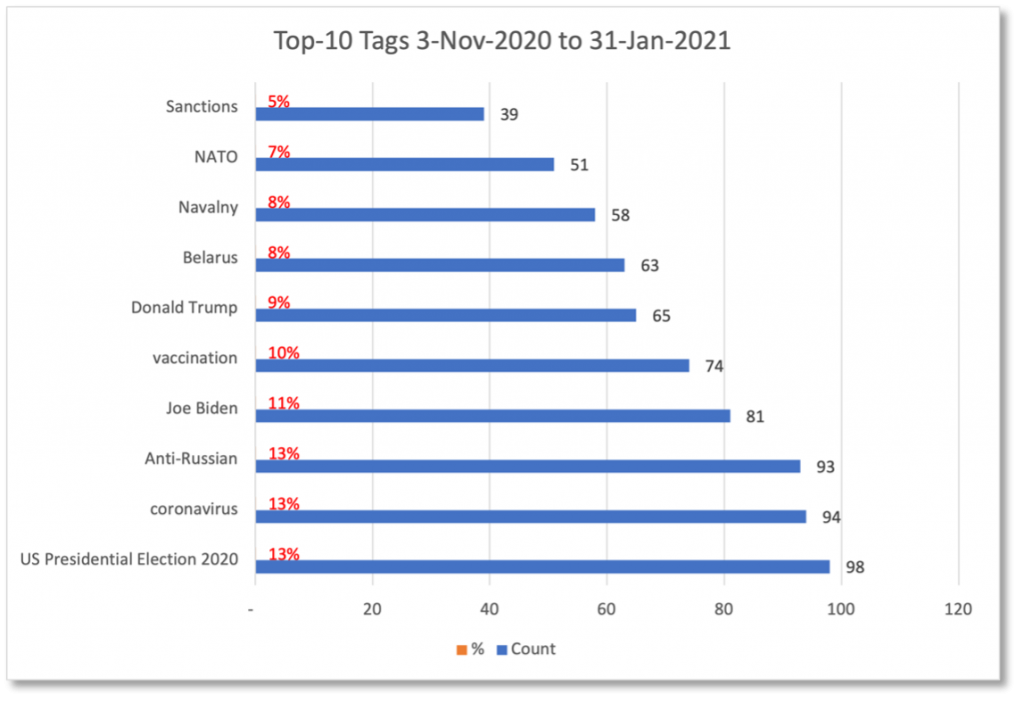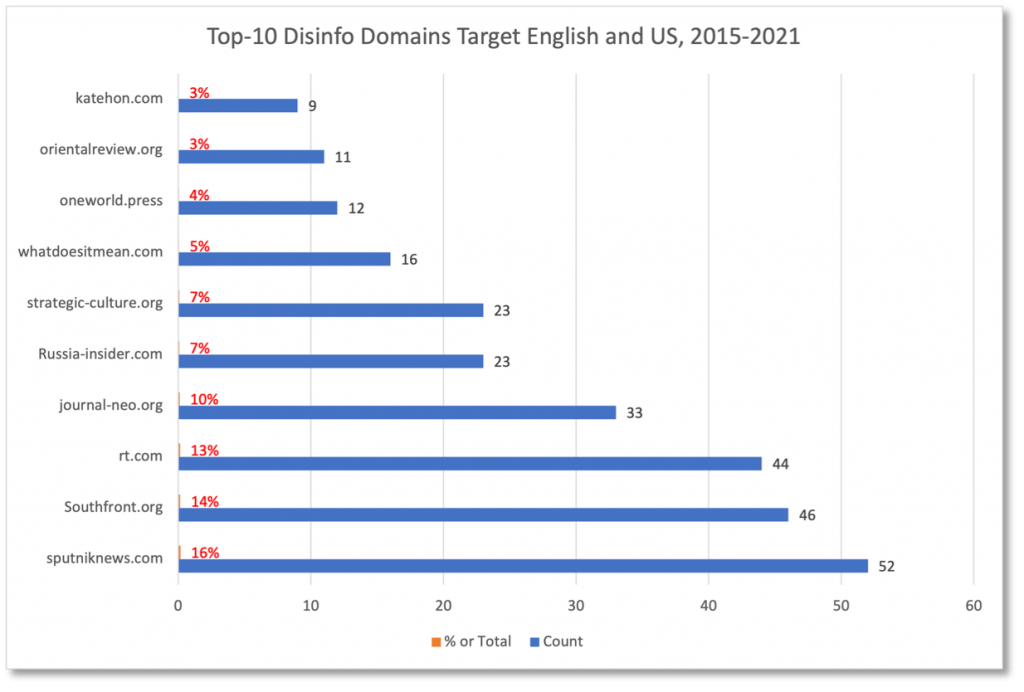In the ninety days since the U.S. presidential elections of November 3rd we’ve seen a surge in momentous world events preceded by or resulting in weaponized disinformation campaigns. A few examples – Biden victory, ‘Stop the Steal’, Capitol insurrection, Biden inauguration, second Trump impeachment, Russian protests of Aleksei Navalny jailing, GameStop market manipulation, coronavirus vaccines, and Myanmar military coup. Observable effects of these events include human casualties and deaths, billions of dollars in physical and financial destruction, and military coups. The severity and frequency of such events underscore the need for systems that can detect, track, and help mitigate disinformation.
When we consider the complexity of disinformation dynamics – its origins, actors, transmission – it’s not unreasonable to ask whether developing systems to track and mitigate disinformation is a fool’s errand. Our answer to this question is, ‘no’. It is a hard problem, but not intractable. Like any complex challenge, solving it requires a clear understanding and characterization of the components and dynamics, and the decomposition of these elements into smaller more manageable pieces.
The technical maturity of disinformation detection and tracking systems is nascent. There are no commercial solution providers capable of covering the diverse range of disinformation purveyors – nation states, political parties and campaigns, media outlets, and QAnon and other fringe groups originating and spreading conspiracy theories. But there are some research efforts focused on aspects of the problem that provide a starting point. In this post, we’ll revisit EUvsDisinfo, a European media research organization that monitors pro-Kremlin disinformation.
Background: EUvsDisinfo, a project of the European External Action Service’s East StratCom Task Force, has been monitoring Russian disinformation campaigns since 2015. The project provides research reports and a searchable database of close to 11,000 campaigns as of 31-January-2021. We’ve previously referenced EUvsDisinfo in posts on disinformation campaigns targeting Belarus, Montenegro and Estonia, Coronavirus, and the U.S. 2020 election. Now, we’ll use the database to analyze recent events.
Topics: Disinformation often contains elements of truth layered with falsehoods and twisted assertions. Russian disinformation may take multiple sides of an argument, alt-right one week, far left the next. Because of this, the particulars of a message are less important than the topic and point-of-view (anti-West, pro-Russia) of the message. To get a sense of the relative importance of particular topics to Russia, we reviewed 742 campaigns for all languages and media outlets listed in the database for the period 3-Nov-2020 (U.S. Elections) to 31-Jan-2021.
Figure 1 shows a ranking by count and percent for selected events for the period of interest. From this we can see that the U.S. presidential election (including Trump and Biden), coronavirus and vaccines, and protests in Russian and its allies (Navalny, Belarus) were the dominant topics.

Engagement: Engagement is a metric used in Web and social media that shows the level of user interaction (link, like, share) to a specific URL associated with a website or social media account. Engagement metrics are not available on the EUvsDisinfo public website but may be provided to researchers. Below are the top-10 campaigns by engagement for the relevant period. Campaigns in red relate to the U.S. election and Capitol insurrection; campaigns in blue relate to coronavirus and vaccines. Language is an indicator of target audience (country or region). Other notable observations:
- Spanish targeted in 5 campaigns reflects foreign policy targeting of Central and South America, and Spain, followed by Arabic (3) and Czech (2)
- The top two campaigns suggest defensive spin over embarrassing events to target audiences

Outlets: Of the close to 11,000 campaigns from 2015 to 2021 in the database, 332 target U.S. audiences based on language and country classification. Outlets refers to the media outlets (Website, social media, TV/video sites) used in the campaign. Notable observations:
- Other than sputniknew.com and rt.com, which are relatively large state-control media outlets, the remaining outlets are boutique or faux think-tank sites
- Other than Russia-insider.com and whatdoesitmean.com, the domain names of the remaining outlets are registered in Russia

Outlook: Russia uses disinformation for domestic propaganda, and as a military weapon and foreign policy tool. It is used against its people, its allies and its adversaries, particularly the U.S., NATO and the West. Russia continuously adapts its methods. And like an expert analytical marketer, it segments its target audience, and employs a wide range of media outlets to reach its audience with tailored messages designed to elicit responses that achieve Russia’s objectives.
The recent surge in domestic disinformation sources and outlets in the U.S. and the West, has made it easier for Russia to conceal their efforts. In November 2020, Reuters reported Twitter findings that QAnon was the most popular hashtag used by Russian-backed accounts, with 17,000 references. Given the incentives and turbo-charging effects of social media scale (Harvard Business Review) on disinformation, we can anticipate that Russia and others will continue to train their disinformation weapons on their targets.
